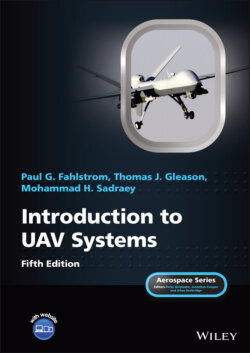Читать книгу Introduction to UAV Systems - Mohammad H. Sadraey - Страница 29
1.3.4 Payloads
ОглавлениеCarrying a payload is the ultimate reason for having a UAV system, and the payload sometimes is the most expensive subsystem of the UAV. Payloads often include video cameras, either daylight or night (image‐intensifiers or thermal infrared), for reconnaissance and surveillance missions. Film cameras were widely used with UAV systems in the past, but are largely replaced today with electronic image collection and storage, as has happened in all areas in which video images are used. Currently, video cameras are the most popular payloads in UAVs.
If target designation is required, a laser is added to the imaging device and the cost increases dramatically. Radar sensors, often using a Moving Target Indicator (MTI) and/or synthetic aperture radar (SAR) technology, are also important payloads for UAVs conducting reconnaissance missions. Another major category of payloads is electronic warfare (EW) systems. They include the full spectrum of signal intelligence (SIGINT) and jammer equipment. Other sensors such as meteorological and chemical sensing devices have been proposed as UAV payloads.
Armed UAVs carry weapons to be fired, dropped, or launched. “Lethal” UAVs carry explosive or other types of warheads and may be deliberately crashed into targets. As discussed elsewhere in this book, there is a significant overlap between UAVs, cruise missiles, and other types of missiles. The design issues for missiles, which are “one‐shot” systems intended to destroy themselves at the end of one flight, are different from those of reusable UAVs and this book concentrates of the reusable systems, although much that is said about them applies as well to the expendable systems.
Another use of UAVs is as a platform for data and communications relays to extend the coverage and range of line‐of‐sight radio‐frequency systems, including the data links used to control UAVs and to return data to the UAV users.
